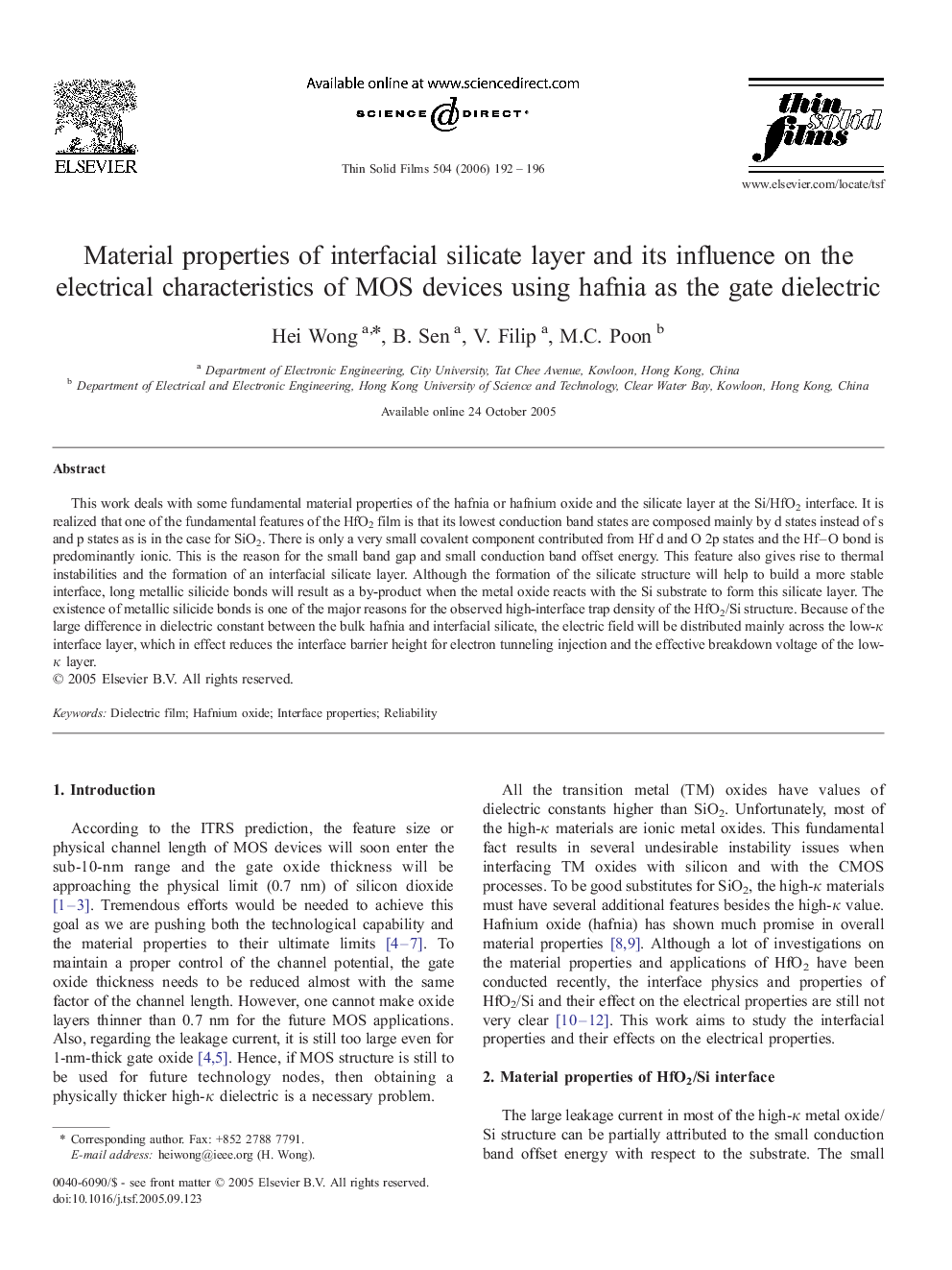| Article ID | Journal | Published Year | Pages | File Type |
|---|---|---|---|---|
| 1675352 | Thin Solid Films | 2006 | 5 Pages |
This work deals with some fundamental material properties of the hafnia or hafnium oxide and the silicate layer at the Si/HfO2 interface. It is realized that one of the fundamental features of the HfO2 film is that its lowest conduction band states are composed mainly by d states instead of s and p states as is in the case for SiO2. There is only a very small covalent component contributed from Hf d and O 2p states and the Hf–O bond is predominantly ionic. This is the reason for the small band gap and small conduction band offset energy. This feature also gives rise to thermal instabilities and the formation of an interfacial silicate layer. Although the formation of the silicate structure will help to build a more stable interface, long metallic silicide bonds will result as a by-product when the metal oxide reacts with the Si substrate to form this silicate layer. The existence of metallic silicide bonds is one of the major reasons for the observed high-interface trap density of the HfO2/Si structure. Because of the large difference in dielectric constant between the bulk hafnia and interfacial silicate, the electric field will be distributed mainly across the low-κ interface layer, which in effect reduces the interface barrier height for electron tunneling injection and the effective breakdown voltage of the low-κ layer.
